Amazing Animals #21 The African Elephant
They are one of the worlds most iconic creatures, famed for their sheer size, incredibly close social bonds and high level of intelligence, they are also a success story for conservation based work, as one of the most well known animals effected by illegal poaching for their magnificent Ivory tusks they have required protection to combat their persecution.
Description and Distribution
There are two species of Elephant on the African continent, the African bush Elephant (Loxodonte africana) and the African forest Elephant (Loxodonte cyclotis), for this article we will focus on the African bush Elephant which is the larger and more widespread species.
The African bush Elephant is the largest and heaviest terrestrial mammal alive today, an average fully matured male stands 3.2 metres tall at the shoulder and weighs over 6 tonnes, females are considerably smaller and stand at an average height of 2.6 metres at the shoulder and weigh roughly 3 tonnes, larger than average Elephants have been documented to stand at 4 metres tall, weighing in excess of 10 tonnes they are heavier than a normal sized passenger Bus.
The iconic feature of the African Elephant is their possession of a magnificent pair of tusks, compared to Asian Elephants both male and female African Elephants possess a large set of tusks when fully matured, similar to how the male is larger in size than the female, he will also have significantly larger tusks, on average a female Elephants tusks will weigh roughly 18 kg’s each, whereas a males can weigh as much as 80 kg’s each.
The tusks are made out of a material called Ivory, this material is mainly made up of dentine which is a calcified tissue found in most species and is a major component in the formation of teeth, with this considered the Elephants tusks are actually elongated incisor teeth, of course they are not used for eating but they are a useful utility tool and can be used for a number of tasks such as stripping tree bark, digging soil, moving objects and as a form of defence.
Other examples of sexual dimorphism in African Elephants can be observed in their spinal structure and the size of their ears, males generally have much larger ears and have a curved spine that forms two distinct humps before tapering to the rump, females still have a curved spine though it is regularly far less pronounced, the spine often appears generally flat and tapers abruptly down to the rump.
Their skin is thick, wrinkled and a uniform black/grey colour, it is also covered sporadically in bristly hairs, for many years these hairs were believed to be a leftover evolutionary trait from a distant relative that once required hair as a form of insulation, this has since been disputed and the sparse coverage of hair on African Elephants functions as a form of temperature regulation, dense hair acts as an insulator but the African Elephants hair actually increases heat loss and may increase their ability to thermoregulate by as much as 23%, in most cases the hair is more visible on young Elephants.
Other visible traits of the African Elephant are their large centrally located trunks (will explore in further detail later in the article) and their large ears in comparison to body size, the main function of their ears is not to hear but to regulate their body temperature, their ears may be as large as 1/6th of their overall body size but are less than a ¼ inch in thickness, an intricate system of capillaries runs through their ears and as blood travels so close to the surface of the skin it works to radiate heat, by the time the blood has travelled through the ears it has cooled off considerably thus cooler blood flows back in to the Elephants body.
A key feature of the African Elephant is their possession of four large Molar teeth, these teeth aid in the grinding and crushing of dense plant materials and are the largest teeth of any terrestrial herbivorous Mammal measuring up to 10 cm’s wide and 30 cm’s long, over the course of their life they will go through four stages of growth, by the age of 30 their “baby teeth” are replaced by a much stronger and larger set, past this age they will undergo further changes between the age of 40-50 and 60-70, eventually the teeth reach a point where growth no longer occurs, at this point the teeth are gradually worn down until the Elephant can no longer effectively feed to maintain its body mass, this is the leading reason for the African Elephants lifespan of up to 75 years.
The African bush Elephant can be observed throughout the plains and grasslands of Sub-Saharan Africa and can be found in the following countries (as detailed in the IUCN report):
Angola; Benin; Botswana; Burkina Faso; Cameroon; Central African Republic; Chad; Congo; Congo, The Democratic Republic of the; Côte d'Ivoire; Equatorial Guinea; Eritrea; Ethiopia; Gabon; Ghana; Guinea; Guinea-Bissau; Kenya; Liberia; Malawi; Mali; Mozambique; Namibia; Niger; Nigeria; Rwanda; Senegal; Sierra Leone; Somalia; South Africa; South Sudan; Tanzania, United Republic of; Togo; Uganda; Zambia; Zimbabwe
Their wild populations have been steadily decreasing over the past century and they are classified by the IUCN as a vulnerable species, in many of the listed countries they exist within protected conservation sites that are funded via the government as well as by private organisations, with this in mind the main threat to the African Elephant across a wider range comes from illegal poaching across vast, hard to police territories as well as through extreme weather events that may result in widespread famine, climate change can be viewed as a serious risk to the African Elephant.
Diet and Behaviour
African Elephants can be classified as a hindgut-mixed herbivore, this means that the bulk of their diet is made up of grasses, twigs, tree bark, fruits and flowers, they will generally consume whatever edible food source they can reach with their trunk, due to their large bodies they must eat in excess of 100 kg’s of vegetation per day, during the hot period of the dry season up to 95% of their diet may consist of tree bark and root stems.
As a hindgut fermenter, very little digestion occurs within the stomach compartment, the stomach of an African Elephant is a large single chambered sac that functions mainly as a form of food storage, most of the digestion occurs once the food is passed through to the large/small intestine, their intestinal tract can measure as long as 19 metres and is capable of digesting up to 40% of the food eaten by the Elephant, their digestive systems are not overly efficient and on average 60% of all consumed food is undigested upon excretion.
African Elephants are highly sociable animals and display incredibly close bonds between herd members which are more often than not made up of family members spanning across numerous generations.
A distinct factor of their social structure is the construction of all female herds that display a matriarchal dominance hierarchy, within the hierarchy there is very little fighting for dominance and the leader of the herd may remain the same for numerous decades.
The Matriarch is often decided to be the oldest member of the herd and she will be tasked with deciding what movements the herd will undertake, a successful matriarch will be deemed as an individual that manages to ensure the herd does not go hungry and is capable of locating water sources as well as defending the herd from intruders and predators, the social structure of the female Elephants dictates that there will be no reason to opt for another matriarch if their current one is successful, contrast this to the majority of other social mammals that dictate leadership through powerplays and acts of aggression, the social structure of Elephants is a peaceful affair.
This has often been cited as a reason why many believe a matriarchal society would benefit the Human race, but it should be noted that the only reason for the success of the female Elephants is the complete absence of the opposite sex within their permanent social structure, to think that the social structure would remain the same with the inclusion of the male as a permanent fixture would be naive thinking at best, the inclusion of a male as a permanent fixture would likely see consistent fighting between rival males and dominance over the group as can be observed during mating rituals.
The male African Elephant does not exhibit the same social structure as their female counterparts, mature Bulls are more often than not solitary creatures, though they may choose to exist within small bachelor groups if the food sources are abundant and water is readily available, in times of scarcity the males can become quite territorial and will fight with other males and may display aggression towards female herds.
Of course, to reproduce a male Elephant must temporarily integrate in to the all-female herd, even then his stay will be brief, once the female enters oestrus she will begin emitting a sound that will attract males within the surrounding kilometres, the males will arrive and will fight each other for the right to breed with the receptive female, once a victor has been decided the female will brush against the male signifying that she is ready to mate, once copulation has occurred the male will leave immediately back to his former territory.
The female may mate with several males during a single season and the rights to breed is not limited to the matriarch, all sexually mature females within the herd are able to breed at any given time, breeding rights also transition in to parenting approach and the upbringing of their eventual offspring is very much a group effort, all females within the herd will care for and protect the calf, even placing themselves in dangerous situations to ensure that predators cannot reach it.
If the calf is female it will likely remain with the herd for its entire life, where it will form a very close bond with all members within the herd and may eventually go on to lead the collective family, the males on the other hand will only remain with the herd until they reach adulthood, at which point they will leave to form a bachelor group of males of a similar age, once fully matured they will likely opt for a solitary life, only mixing with their species to reproduce.
Aside from their close bonds within the herd, males that have left the herd will occasionally acknowledge and socialise with their previous social group if they should encounter each other on their travels, this details that the social bonds of the African Elephant go far beyond a simple survival technique and that they are in fact capable of long term memory, visual recognition and complex thought.
This can be most commonly observed after the passing of a herd member or even a stranger, in the event of a passing Elephants will regularly gather around and remain with the deceased Elephant for long period of time, during this time they may feel the deceased Elephant with their trunks and will communicate through vocalisations, it is evident that African Elephants are capable of both love and grief, and it comes as no surprise that they have high cognitive ability and can think logically to solve both physical and emotional problems, they are widely considered to be one of the most intelligent species on the planet after Humans.
Their Complex Trunk
As previously mentioned they possess another significant visible trait, it is their large centrally locate trunk, their trunk is the single most intricate and complicated formation of muscles in the Animal Kingdom, their trunk alone contains over 40,000 separate muscles and can weigh up to 120 kg’s, compare that to ourselves who possess at most 840 (depending on what you constitute as a separate muscle) muscles in our entire body you can gain an idea of just how complex an Elephants trunk is.
This complexity allows the trunk to have a number of incredibly useful functions, firstly it functions like a hominid arm and hand, and is capable of grasping and pulling objects to the mouth, the tip of an African Elephants trunk has two opposing “fingers” which can clasp together thus mimicking the function of a clasping hand, this feature is only present in the African Elephant which is why if you were to observe an Asian Elephant eating they instead opt to wrap their trunk around an object to pick it up as they do not possess the opposing fingers at the tip of their trunk.
The trunk is the single most important body part of the Elephant (aside from vital organs obviously), without it they would very much struggle to meet their bodies nutritional demands which dictates that they must consume over 100 kg’s of food per day and drink over 50 gallons of water, due to the sheer size of the Elephant they would struggle without their trunk to reach low or hanging vegetation, the trunk is flexible and can be extended and contorted in a number of ways that allows them to reach food that would otherwise be impossible to access.
They would be unable to drink easily without their trunk, they would have to take a prone position which is not an ideal position for an Elephant to be in, just getting up regularly would likely have a negative impact on their joints, they do not however drink through their trunk, instead they suck large quantities of water about half way up their trunk, they then exhale the water in to their mouth to drink, they can also spray the water over themselves to keep themselves cool.
Another utility of their trunk is their capable to breathe and smell through it, at the base of their trunk they have highly tuned nasal sensory nodes that are capable of detecting even the slightest of scents, upon observation of the African Elephants genome it was found that they have the largest number of genes dedicated to smell of any mammal, they can detect smells that have travelled over distances of over 3 miles and are thought to be able to distinguish scents related to specific threats.
It has been observed that they display behavioural changes in the vicinity of the Maasai, who sometimes display virility by spearing Elephants, whereas they remain calm in the vicinity of the Kamba, who are an agricultural people who pose no threat to them as a species.
Finally they are the only mammal on the planet that is capable of traversing through the water via the use of a natural snorkel, large specimens may be able to walk along the surface of a riverbed quite comfortably with just their trunk above the waters surface, my other half pointed out that this has been an adaptation copied in the engineering world, specifically for 4x4 off-road vehicles that allows engines to run even when submerged in water.
Amazing Facts
They can move objects weighing up to 700 kg’s using only their trunk, I’ve observed this myself when our male was able to move a small boulder with seemingly little to no effort.
As they are the largest terrestrial mammal on the planet you might guess that they have the largest organs as well, and you would be right, their heart weighs up to 22 kg’s and pumps 450 litres of blood around their body, their liver weighs the same an average Human male at 77 kg’s, their tongue weighs up to 12 kg’s and their skin can weigh up to 750 kg’s.
A single Elephant can produce up to 2000 litres of Methane gas per day.
Every year for a period of 1 month, fully matured male Elephants enter a phase known as Musth, during Musth testosterone levels rise up to 60 times their regular levels and a rich hormonal secretion leaks from the temporal glands located on the side of the Elephants head, Bull Elephants in Musth are extremely aggressive and dangerous towards pretty much everything, they have been observed killing other Elephants, Giraffes and even full-grown Rhinos.
When fully matured they have no natural predators, large herds live a relatively peaceful existence in protected areas.
They are capable of communicating through a number of vocalisations most of which are made up of low rumbles, some of the vocalisations are not possible to hear with Human hearing though appear to be heard by other Elephants at distances of up to 1 km, their wide range of vocalisations and intricate hearing indicates they likely have their own form of primitive language.
Both male and female Elephants have a lifespan similar to our own, as mentioned previously they often die due to an inability to consume food.
Every task carried out by the Matriarch is a learning experience for the younger Elephants in the herd, upon her death the next eldest Elephant in the herd will mimic the previous matriarchs’ behaviour, this means behavioural patterns may remain the same for decades.
They have the largest skull of any mammal in relation to their body size and it can weigh as much as 25% of their overall body weight, within the skull they have a Brain that weighs up to 5 kg’s, they have three times the number of neurons in their brain as Humans do though the majority of them are dedicated to the control of their complex limbs, needless to say they are still highly intelligent creatures.
They have very good memories and are capable of remembering and recognising Elephants they previously shared a close bond with even after years of separation.
Content Sources
More Amazing Animals
If you Enjoyed this article feel free to check out some of my previous editions of Amazing animals.
- The African Lion
- The Arctic Fox
- The Peregrine Falcon
- The Komodo Dragon
- The Great White Shark
- The Hyena
- The Harp Seal
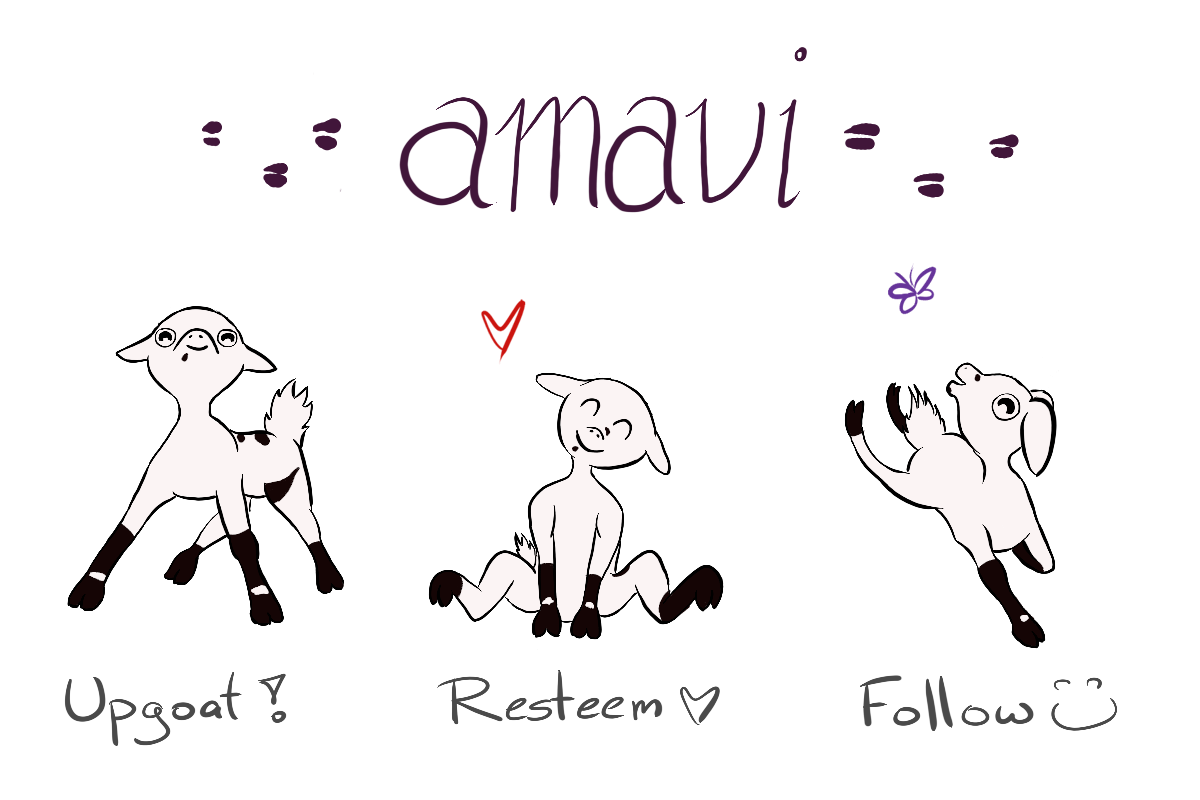


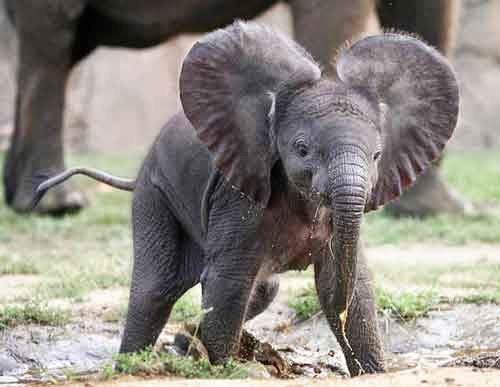
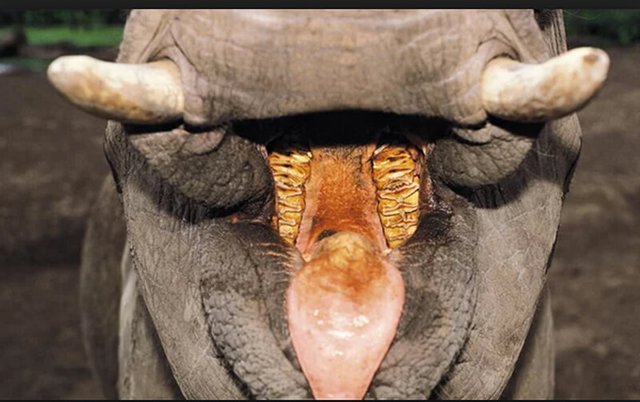

/elephantGE5-58c54ce03df78c353cd5e26f.jpg)
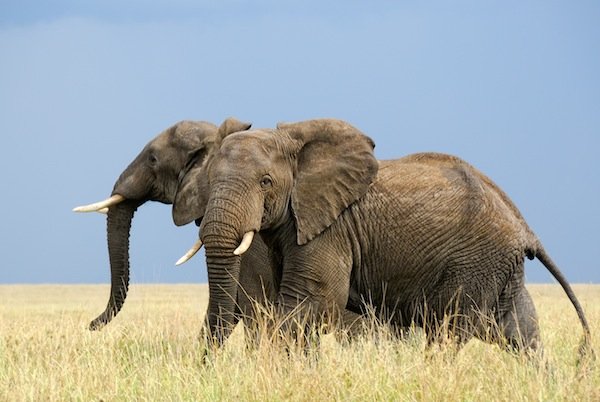
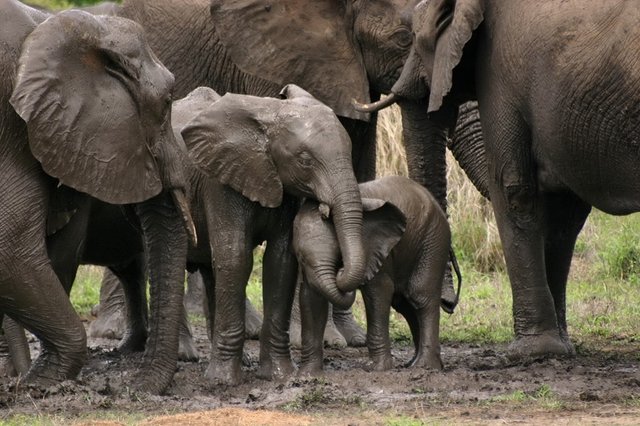
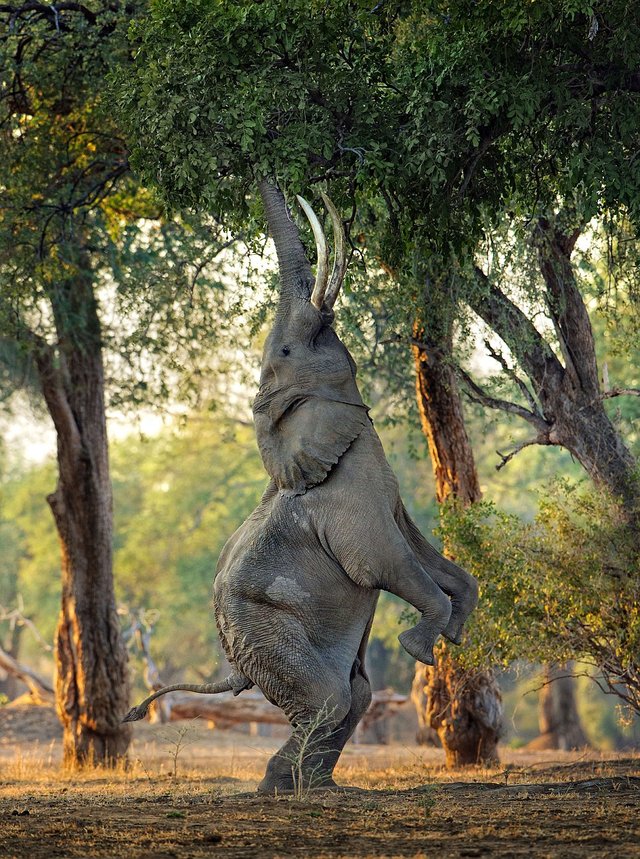
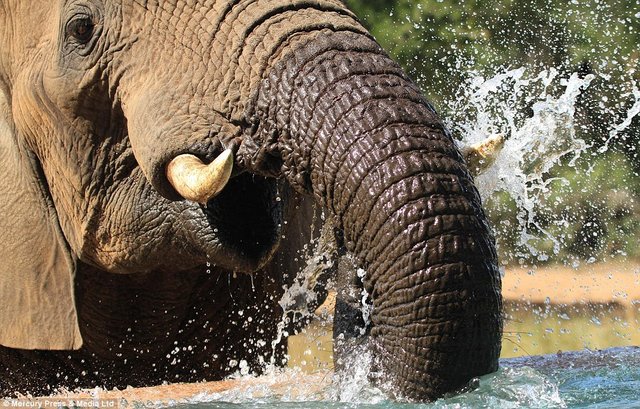
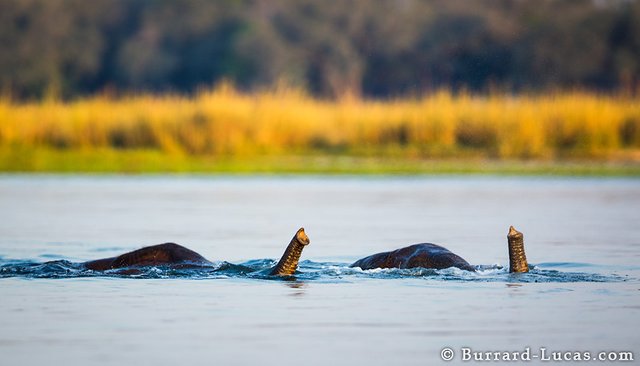
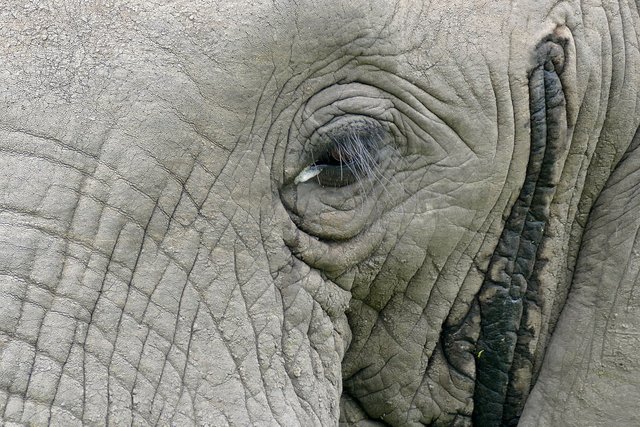
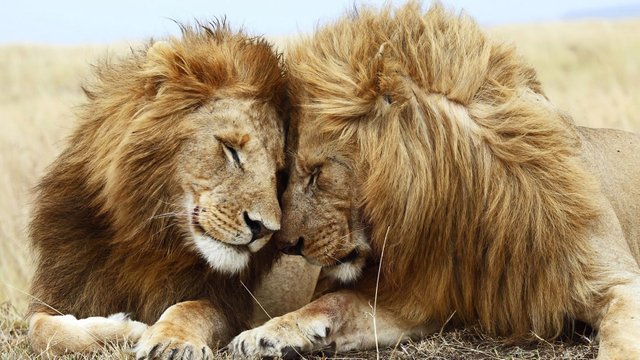
Being A SteemStem Member
Thank you for the interesting story. Elephants are very beautiful and interesting animals.
Nice post! I never knew that most older elephants starve because their teeth wear down.
Wonderful post! I loved that picture of the snorkeling elephants, that's a handy way for them to move across water.
I like to follow organizations like the David Sheldrick Wildlife Trust, while it is so sad that humans still poach elephants for the most inane of reasons, it is heartwarming that there are people who care and organized to save elephant babies and raise them back to health. It's especially awesome when the grown up elephants come back with their own babies!
Which organizations that support elephants/other wildlife do you especially like?
The David Sheldrick is one of my all time favourite charities that I have been following since I was 18. I wrote a post about them Here but excuse the formatting, I was very new to Steemit then. There was a documentary called Elephant diaries that brought my love for this charity alive. They are incredible
I loved this post. I love elephants and most animals. I have to say I end up watching animal planet and other programs on animals almost on a constant basis. Just love them.
There will come a time when humankind will be humane to every being that breathes.
Thanks for the post. It reads like a well laid out field guide.
Wonder how long they could live for if they could find food they didn't have to chew after their teeth had worn down or if they were fitted with dentures or something :O
Also how do we know the language is primitive? :D they could have this amazingly complex language that we just don't understand with our feeble human brains ;D
Hope you're feeling a little bit better :)
Maybe the word primitive isn't the correct word, their language is no doubt more developed than most other Mammals on the planet, but is still likely primitive when compared to our own, this is based off of the Neuron allocation within their brain.
African Elephants have three times the number of neurons in their brain than we do, but 97.5% of their neurons are found in the Cerebellum, the Cerebellum takes sensory inputs and converts them in to coordinated and precise body movements, their motor skills are far greater than our own and this can be easily observed when simply watching how intricately an Elephant is able to use their trunk, controlling 40000 muscles in not an easy task!
The cerebral cortex is the part of the brain where most of the language processing functions are carried out, an African Elephants cerebral cortex is twice the mass of our own, yet our cerebral cortex contains three times as many neurons, as such our cognitive ability is far superior to an African Elephants.
Hope that's helped a bit!
I don't always need to be taken seriously, I shit stir a lot :) I'm glad you busted out the science though, it's interesting :D
Resteemed to over 11600 followers and 100% upvoted. Thank you for using my service!
Send 0.200 Steem or 0.200 Steem Dollar and the URL in the memo to use the bot.
Read here how the bot from Berlin works.
We are happy to be part of the APPICS bounty program. APPICS is a new social community based on Steem. The presale was sold in 26 minutes. The ICO will start soon. You can get a account over our invite link: https://ico.appics.com/login?referral=1fRdrJIW
@resteem.bot
Awesome post! I invite you to visit our blog and vote us back! And of course to enjoy our content :)